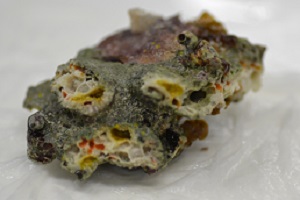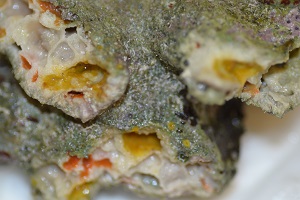Bioerosion
Cliona has an important role in coral reef ecology as it bioerodes coral substrate causing reef decay and subsequent destruction of the reef. As well as this, it plays a role in CaCO3 cycling, balance and storage, production of fine sediments, influence on reef morphology and also influences coral asexual reproduction (Calcinai et al. 2007). Abundance of Cliona appears to increase on coral reefs that have been disturbed by changing environmental conditions (i.e rise in temperature and salinity).
Penetrating the coral and tunnel formation, has benefits for the sponge as it provides protection from not only predators and grazers such as parrot fish, but also changes in environmental conditions such as low salinity, increased temperatures and exposure to air (Schonberg 2003).
Clonia themselves are seen as a threat as they are strong space competitors eventually overgrowing and displacing the coral host (Schonberg and Loh 2005). As they also erode into mollusc shells, such as various bivalves (mussels, oysters, scallops and clams), they have become a large threat to these species especially in commercial, marine aquaculture industries (Schonberg 2001), where they destroy the shells, thus losing production of commercially valuable species such as the black pearl oyster (Mao Che et al. 1996) and the Western Australian pearl oyster (Fromont et al. 2005).

Above & Below: Image displaying clear tunnels formed through
coral rubble with Cliona sp. lining the walls of the tunnel
 
|